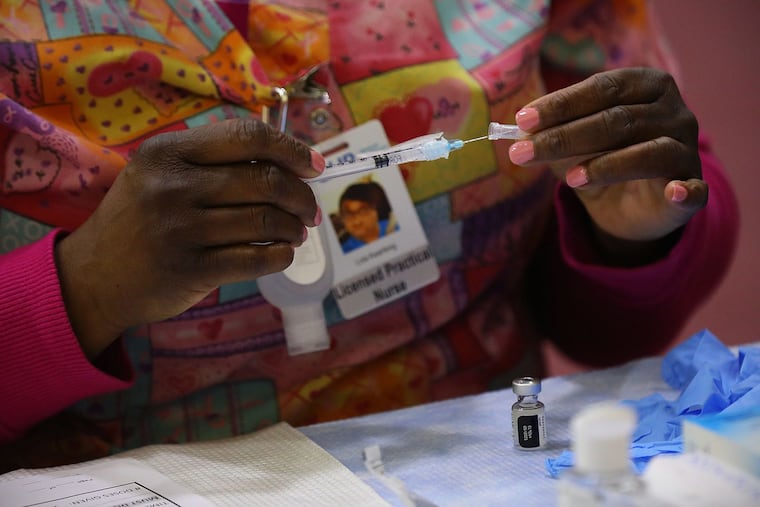For the city’s public health infrastructure, key lessons from the pandemic | Rebuilding Philly
The spread of COVID-19 illustrated yet again how systemic racism, in its many manifestations, profoundly shapes the health of Black people and people of color in our city, writes Ana V. Diez Roux.

The last year and a half has made more visible than ever the multiple ways in which the social and economic systems that we live in affect our health and create and sustain profound inequities in health across races, social classes, and neighborhoods.
The distribution of COVID-19 starkly illustrated how health is not distributed randomly, but rather follows predictable patterns that reflect inequities in living and working conditions across generations. We have also seen illustrated yet again how systemic racism, in its many manifestations, profoundly shapes the health of Black people and people of color in our city and in cities all over the United States.
Rebuilding Philly
The pandemic has highlighted the fundamental role of public health infrastructure: the need for robust systems to collect and analyze data, for the resources required to intervene based on that data, and the critical role of a coordinated and evidence-based response to any public health crisis.
» READ MORE: Introducing Rebuilding Philly, a series on creating a more equitable city in the wake of COVID-19 | Opinion
We have seen how important our Department of Public Health is, something that we tend to lose sight of when we are not in a public health crisis but that is fundamental to the city’s well-being in countless and less visible ways, not only protecting us from infectious diseases but also by creating healthy environments to reduce chronic diseases. But what other lessons about creating a healthier Philadelphia have emerged from these past 18 months?
The first lesson is that improving health in our city requires reducing the stark inequities in health by race, income, and neighborhood that we see for virtually every health condition. And this cannot be fully accomplished through health care or even through public health interventions alone, important as they are.
Reducing these inequities requires reducing poverty and income inequality, improving work conditions, and enhancing access to and quality of education. It also requires investing in neighborhoods.
In our city, as in many others, residential segregation creates differences across neighborhoods in resources and environments fundamental to health, from litter in the streets, to vacant lots, to access to healthy foods and green spaces, to availability of tobacco, to air pollution, among many others. We need to recognize that social policy, economic policy, education policy, and urban development policy are health policy.
The second lesson is that despite the challenges and the uncertainty, change is possible when a crisis demands it. In response to COVID-19, we changed the way we live and work, we invested in payments to individuals and unemployment benefits, leading to dramatic reductions in poverty nationwide.
We experienced what a city can feel and look like with fewer cars and less air pollution, with pedestrians walking down the middle of the streets. We have seen thousands protesting for racial justice. All this has shown us that a different city, a more just city, a city with more solidarity, that is more environmentally sustainable, and indeed a healthier city for all is possible.
» READ MORE: Fixing the digital divide doesn’t mean what you think it does | Rebuilding Philly
This is not the time to flee cities, to abandon the density that gives cities their potential for healthier lifestyles and lower environmental impact, to abandon the power of cities to promote equity and better lives, to abandon the mixtures of cultures and histories and experiences that give cities their energy and creativity.
We can design and govern cities in ways that promote walking and cycling and reduce automobile use, in ways that enhance public spaces and green spaces and reduce waste, in ways that reduce racial and social inequality, in ways that leverage the diversity of cities to spur creativity and promote a better and more enriching life for all. All these things will also make cities healthier.
Cities all over the world are grappling with similar challenges: how can we seize the moment to implement what we know and reenvision cities so that they are healthier, more equitable, more environmentally sustainable, and better for all of us.
The change won’t be easy, many powerful interests will be opposed, and the experience of COVID-19 may cause some to fear urban life, but what better time than this to envision and create a different and better urban future, one that is more just and, at the same time, healthier for us and better for our planet?
Ana V. Diez Roux, MD, Ph.D., MPH, is the Dana and David Dornsife dean and Distinguished University Professor of Epidemiology at the Dornsife School of Public Health and director of the Drexel Urban Health Collaborative.